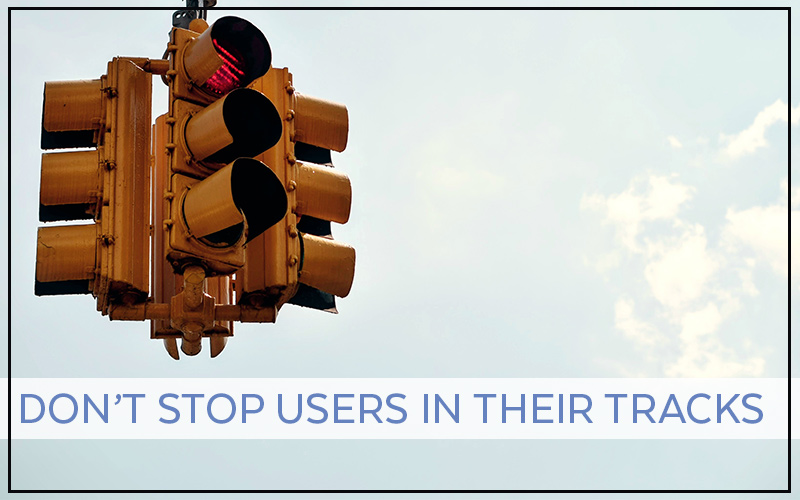Your 2017 Web Design – 3 Essential things search engines expect.
I am sure you don’t need reminding (or want to be reminded) that 2017 is just around the corner.
As the new year rolls in Google will be rolling out a few things in their search algorithm.
If your 2017 web design isn’t properly developed for mobile devices then you will lose out.
This shouldn’t come as a surprise because Google started penalising sites that weren’t mobile responsive ages ago (in internet history).
2017 is the year that non responsive sites will be completely dead to search engines.
Website, and hence user, security is also high on Google’s list of expectations. If you have a http:// site then it’s time to move to https:// if you don’t want users to receive a security warning each time they try and navigate to your site.
Mobile Responsiveness
Is your website properly mobile responsive?
Here’s how you can check your 2017 web design against what search engines expect of your site on mobile…
Bring up your business website on your mobile phone. Does the content resize to fit the screen? Do you have scroll left and right to see the complete content? Is the text easy to read or do you need to zoom to read it?
Google provides a tool that will analyse your site and tell you whether it passes their mobile-friendly test. Plug in your website URL and find out direct from Google here.
If your site isn’t mobile-friendly then it’s well past time to do something about it.
How about mobile sites with pinch zoom?
Responsive websites with pinch zoom are fine with search engines from a mobile-friendly perspective. However, whether it should be enabled on all websites is questionable. Some users want it, other users don’t. Pinch zoom can add to or detract from user experience in equal measure.
Pinch zoom enabled will annoy some users, not having it will frustrate others. Have you ever zoomed in and ended up accidentally navigating somewhere else on the site or, worse, away from it?
The iOS 10 update overrides ‘no zoom’ on Safari to provide users with the ability to zoom, yet the current default development standard is ‘zoom disabled’.
Confused about the ‘right’ answer? Us too.
Here’s a couple of things to consider about pinch zoom:
Your website should be easy to read and navigate without zooming in. If the average user needs to pinch zoom to comfortably consume the content on your website then it’s time for a makeover.
Consider why users are coming to your website. If you’re an eCommerce site then the likelihood of users wanting to see more detail higher. However, having really good product shots that show detail is better for the user than providing one image that the user needs to zoom in on.
Images are the thing people most often want to zoom in on so they can see detail more clearly. Allowing pinch zoom on images after opening (double tap) but disabling zoom across the rest of your site is a good way to sit on the fence and provide optimal user experience.
Responsive sites with pinch zoom enabled often don’t present images and text optimised for mobile viewing experience. This makes a website appear dated.
Whether or not a site should have pinch zoom is a case of not being able to please everyone. For a well-built site enabling pinch zoom is just as likely to detract from the mobile user experience not enhance it. A mobile-friendly site in need of a makeover will suffer without pinch zoom.
Pinch zoom is only a minor thing but important to consider in the context of other things your website might need to make search engines happy in 2017.
Independent Mobile and Desktop Search Indexing
This particular situation is a little technical so bear with me while I explain.
Some websites have completely different sites built for mobile and desktop.
Usually the mobile site is built on a subdomain of the main site, something like m.yourwebsite.com (sitting alongside the non-responsive, desktop version of yourwebsite.com).
The problem here is twofold.
The mobile site is a cut down version of your main site. It has the same content on it as the main site, but not all of it. When Google indexes (decides where to rank) your mobile site m.yourwebsite.com it’s not taking all of the content on your main site yourwebsite.com into account.
This is not a good thing. Your site will rank poorly on mobile and the duplicate content can impact on your desktop ranking, dragging you down lower.
m.yourwebsite.com websites are not prolific but for businesses who do have them it’s time to invest in a new website.
As of October ‘mobile first’ indexing will kick off in a bog way so if you’ve got two separate websites for mobile and desktop NOW is the time to consolidate down to a single site. HINT: We can help you with this!
Disruptions to User Experience
Google isn’t stopping at web design responsiveness with regard to ranking. They’ve also declared war on anything that disrupts or interferes with user intent.
Top of that list is pop ups.
Do you have popups on your website, or a welcome mat?
It’s time for a review of how, when and where they are appearing.
Your popups need to be configured differently for different devices (this is easily done). Anything that covers the screen is a no go on mobile but they’re still fine on desktop.
Popups are not the only thing that you need to review. If you are using a display ad network you need to be careful about where and when those ads are appear on your mobile site layout. Ads should not interrupt the flow of what your visitor is reading.
Site Security
Google has been pushing sites towards https in favour of http for some time now. Secure sites tend to rank better than competing sites who do not have an SSL certificate. As of 2017 site security is considered essential by the search engine.
If your site doesn’t have an SSL security certificate then users navigating to your site will receive a warning.
Changing from http to https is a straightforward process from our perspective but it’s not as simple as simply purchasing the SSL certificate. There is some backend work that needs to be done to ensure your http site, and all of the pages within it, is redirecting to the equivalent places on your https site.
If the changeover isn’t completed properly you’ll lose domain authority and end up with broken links all over the place.
If you’re like us and don’t take payments on your website then you’re probably questioning why you need to be https. We’ve mumbled and groaned about it too but, long term at least, it absolutely makes sense to make the change.
If you have a website then there’s a good chance it’s linked to some element of income for you. Even if you don’t have anything for sale right now you might one day and it’s easier to make the change now, while your website is smaller, than later.
If you’re a blogger with a large site then switching to SSL offers a good opportunity to review all of your site content. This will be beneficial for you for a number of reasons including improved SEO and assistance with content planning.
Need a hand getting your head around what may or may not need attention on your website? Get in touch and we’ll have a look and advise you. Know that you need to make the change to SSL, we have a package available to make that change over seamless for you.
[caldera_form id=”CF5755446851f08″]





